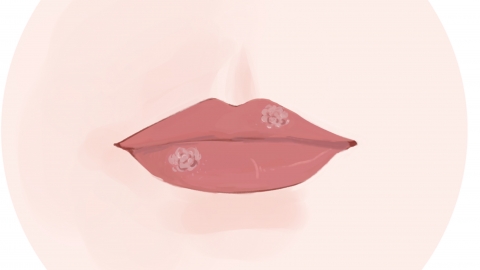What causes dry, chapped, and purplish lips, and what should I do?
Generally, chapped and purplish lips may be caused by dry climate, dehydration, anemia, cheilitis, or Sjögren's syndrome. It is recommended to seek medical attention promptly and receive treatments such as general care and medication under a doctor's guidance. Detailed explanations are as follows:

1. Dry Climate
In arid environments, moisture from the lips evaporates quickly, accelerating water loss from the lip surface and causing chapping. In cold temperatures, blood vessels in the lips constrict, reducing blood flow and oxygenation of hemoglobin, which can cause the lips to turn purplish. In dry seasons or environments, using a humidifier to increase air moisture and practicing proper lip care, such as applying lip balm, can help.
2. Dehydration
When the body lacks water, the lips' skin receives insufficient hydration, reducing moisture content in the stratum corneum and leading to chapped lips. Additionally, dehydration may impair circulation, slowing local blood flow and reducing blood oxygen levels, causing the lips to appear purplish. It is generally recommended to drink at least 1500-2000 milliliters of water daily, divided into multiple servings, rather than waiting until thirsty to drink water.
3. Anemia
Anemia may result from insufficient or reduced red blood cell production, excessive red blood cell destruction, or blood loss. Anemia reduces the number of red blood cells or hemoglobin in the blood, impairing oxygen transport. Areas such as the lips may not receive adequate oxygen, causing them to appear purplish. Additionally, due to insufficient nutrient supply, the lip mucosa may become dry and cracked. Symptoms such as dizziness and fatigue may also occur. Patients may take medications such as ferrous succinate tablets, ferrous fumarate granules, and mecobalamin tablets under a doctor's guidance.
4. Cheilitis
Cheilitis is often caused by allergies, infections, sun exposure, and other factors. Inflammation irritates the lip mucosa, damaging the skin barrier function of the lips and causing chapping. The inflammation may also affect the normal function of blood vessels in the lips, causing local circulatory disturbances and resulting in purplish lips. Symptoms such as redness and itching of the lips may also occur. Patients may use medications such as desonide cream, tacrolimus ointment, and cetirizine hydrochloride tablets under a doctor's guidance.
5. Sjögren's Syndrome
Sjögren's syndrome is an autoimmune disease primarily affecting exocrine glands such as the salivary and lacrimal glands, leading to reduced saliva production. Without adequate saliva lubrication, the lips become prone to dryness and cracking. Due to immune system dysfunction, systemic circulation and oxygen delivery may also be affected, causing the lips to turn purplish. Symptoms such as dry mouth and dry eyes may also accompany this condition. Patients may take medications such as prednisone acetate tablets, methotrexate tablets, and hydroxychloroquine sulfate tablets according to medical advice.
Maintaining a regular lifestyle and getting sufficient sleep can help support the body's metabolism and self-repair mechanisms, preserving the normal condition of lip skin.






